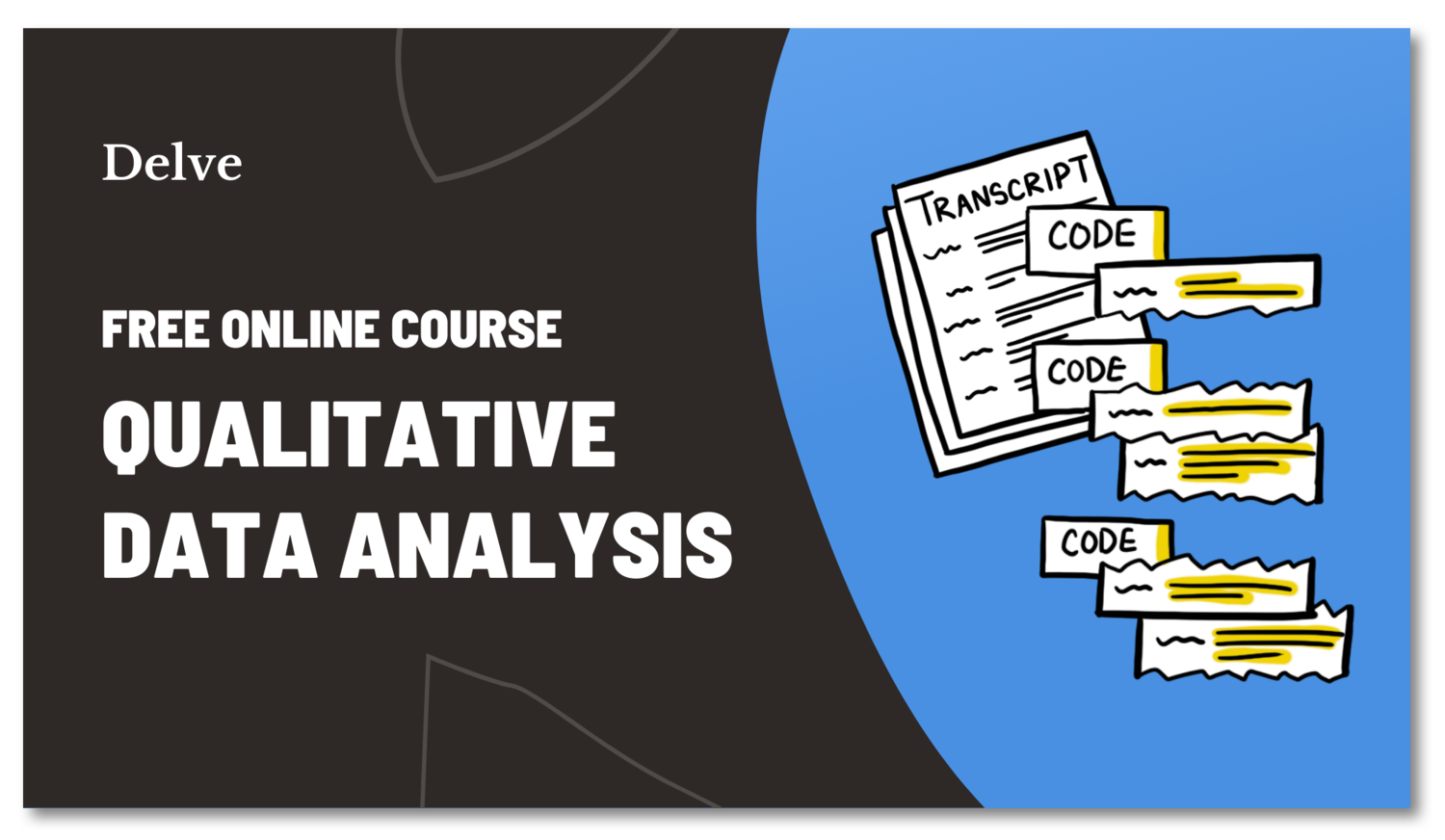Content Analysis vs Thematic Analysis: What's the Difference?
Thematic analysis and qualitative content analysis are two popular approaches used to analyze qualitative data. Confusingly, the two research approaches are often defined in similar ways or even used interchangeably in defining literature.
Joffe (2012) points out that thematic analysis originally emerged from content analysis, but it developed into a separate approach with its own unique research goals. This evolution over time contributes to the mix-up between the two methods. Sub-categories like conventional content analysis and relational content analysis add another wrinkle of complexity by introducing variations and nuances to content analysis as a whole.
In this article, we clarify the difference between thematic analysis and the common forms of qualitative content analysis—and offer researchers a rational way to match the purpose of their intended research with the appropriate method of data analysis.
Thematic vs Content Analysis: Tl;dr Version
Thematic analysis is an intuitive approach to qualitative data analysis that allows researchers to explore patterns across their data. It involves identifying and understanding key themes in the data and how they relate to one another. “Themes” are overarching categories of common information related to a research phenomenon, which tells a story about its dimensions.
On the other hand, content analysis is a more practical approach that can be used as a quantitative or qualitative method of data analysis. It can be applied to both textual and visual data but is more often applied to the latter. At its core, content analysis is a data collection technique used to determine the presence of certain words, themes, or concepts within data.
[Streamline your coding—regardless of the method—with Delve. Try it free for 14 days.]
Understanding Content vs Thematic Analysis
What is Thematic Analysis?
Thematic analysis is a qualitative research method for analyzing data that entails searching across a data set to identify, analyze, and report repeated patterns (Braun and Clarke 2006). You can conduct thematic analysis alone or with others through collaborative thematic analysis.
Eponymously, the themes derived from the data actively construct the patterns of meaning to answer a research question. In short, themes are ‘a patterned response or meaning’ derived from coded data that represent overarching ideas embedded within the larger data set. [1][2]
As a result, thematic analysis is an effective qualitative research method for describing data that also involves your own interpretation to select codes and construct themes.
What are the main goals of thematic analysis?
The three main goals of thematic analysis are:
To identify important themes from the data.
To understand how themes relate to one another and how they are manifested in the data.
To use themes to generate new insights about a particular phenomenon.
When to use thematic analysis
Thematic analysis is a useful way to understand experiences, thoughts, or behaviors across a data set. Additionally, due to the clear, easy-to-follow processes outlined by Braun and Clarke (2006, 2012, 2017), researchers have suggested that thematic analysis is an ideal analytic method for novice qualitative researchers (Nowell et al. 2017).
What is Content Analysis?
Content analysis is a data collection technique used to determine the presence of certain words, themes, or concepts within qualitative data—either inductively or deductively—to explain a phenomenon. In short, the purpose of content analysis is to describe the characteristics of the document's content by examining who says what, to whom, and with what effect [3].
For example, researchers could use content analysis to evaluate language used within poems to search for a collective understanding of a phenomenon within a specific community—such as malaria in rural Africa. Researchers can then make inferences about the messages within the texts, the writer(s), the audience, and even the culture and time surrounding the poems.[4]
What are the main goals of qualitative content analysis?
The three main goals of qualitative content analysis are:
To identify and understand themes, patterns, and relationships within the data.
To explore how the data can inform theoretical claims made in research studies.
To quantify qualitative data.
When to use qualitative content analysis?
You can use qualitative content analysis to quantify and analyze the presence, meanings, and relationships of such certain words, themes, or concepts within textual data. You can also consider using qualitative content analysis when you want to apply a more interpretive level of analysis to your data than would be possible through quantitative content analysis.
Qualitative analysis doesn't have to be overwhelming
Take Delve's free online course to learn how to find themes and patterns in your qualitative data. Get started here.

The difference between thematic analysis and content analysis in qualitative research
Thematic analysis focuses on extracting high-level themes from within data, while content analysis—especially subcategorical methods like summative content analysis—focus on the reoccurrence of concepts or keywords at a more surface-level of analysis i.e. their frequency.
In essence, the main difference between the two methods lies in the possibility of quantification of data in content analysis by measuring the frequency of different categories and themes. [4] While frequency is generally a core tenet of qualitative content analysis where statistical findings are tabulated or visualized in the final write-up, it is not a focus of thematic analysis.
Instead, in contrast to tallying concepts or keywords to infer meaning as you would in content analysis, a theme is not necessarily reflective of the frequency of its appearance within the data in a thematic analysis (Braun and Clarke 2006; Nowell et al. 2017).
In summary, statistical data is core to most content analysis but is not typically cited in thematic analysis. And while the former tends to focus on more manifest data that is apparent through surface-level analysis, neither method is inherently more beneficial or astute than the other.
Main differences between thematic analysis and content analysis are:
Thematic analysis (TA) is a qualitative method used to uncover themes in textual data, while content analysis (CA) is either a quantitative or a qualitative approach that also involves some quantification of data.
CA generally counts the occurrence of concepts or keywords to infer meaning, while TA assigns meaning by extracting high-level ideas.
TA focuses on the overarching themes in the data and how those themes relate to one another, while in CA researchers count instances of coded concepts and keywords within large amounts of textual data with less focus on comparing or contrasting those codes.
Some differences in how thematic analysis and content analysis are used:
To elaborate further, these next differences exemplify how thematic analysis and content analysis are commonly used in practice. Though it is important to note that there are exceptions to each.
Thematic analysis always involves an inductive portion of analysis. While there are forms of inductive content analysis, it is more common in content analysis to apply existing theories and frameworks through a deductive analytical technique.
As the name implies, content analysis was historically applied to “content”. This includes qualitative data such as newspapers, books, research journals, and letters. The data for thematic analysis is often directly collected by the researcher, such as through semi-structured interviews. That being said, you may still apply thematic analysis to newspaper articles, and content analysis to semi-structured interviews.
Content analysis is able to use “automated” forms of analysis, and the researcher may not need to read their entire dataset. For example, in summative content analysis, you only seek specific keywords and could use Delve’s search functionality to quickly find those keywords and code them. In thematic analysis, automated forms of analysis are still a valuable aid, but the researcher will almost always still need to read the entire data set.
It's important to note that both methods have their advantages and disadvantages depending on the research question being asked and the type of data being analyzed.
Thematic analysis vs content analysis: the similarities
Now that we have covered the differences between qualitative content analysis and thematic analysis, it is important to note that similarities also exist between each method.
For instance, both content analysis and thematic analysis share the same aim of analytically examining narrative materials from life stories by breaking the text into relatively small units of content and submitting them to descriptive treatment (Sparkes, 2005). Both are descriptive qualitative approaches to data analysis that achieve a similar goal, just in different ways.
Beyond that, these are some other overlapping characteristics:
They both involve examining qualitative data.
Both are used to generate new knowledge from the data.
Both are iterative processes that require intimate knowledge of the data you study.
Both approaches can be used to inform theoretical claims in research studies.
Conclusion
No matter which method you choose, it's important to understand how each qualitative research method works so you can confidently decide which one best suits your research needs. Now that you’ve read this article, you are equipped with the knowledge to do just that!
Ready to streamline your qualitative data analysis?
Whether for thematic analysis or content analysis, Delve can simplify your qualitative data analysis. Delve users also appreciate its robust features for collaborative qualitative analysis, simplifying teamwork across locations and with various team members.
Delve Qualitative Data Analysis (QDA) Software
Get Started With Delve Today:
Start Your Free Trial: Dive into qualitative data analysis with Delve. Try our platform free for 14 days, and streamline your coding process.
Take Our Free Course: Want to master qualitative data analysis? Enroll in our Free Online Qualitative Data Analysis Course and enhance your research skills.
References
Michelle E. Kiger & Lara Varpio (2020): Thematic analysis of qualitative data: AMEE Guide No. 131, Medical Teacher.
Braun, V., & Clarke, V. (2006). Using thematic analysis in psychology. Qualitative Research in Psychology, 3(2), 77–101.
Vaismoradi M, Turunen H, Bondas T. Content analysis and thematic analysis: Implications for conducting a qualitative descriptive study. Nurs Health Sci. 2013 Sep;15(3):398-405.
Content Analysis. (n.d.). https://www.publichealth.columbia.edu/research/population-health-methods/content-analysis
Nowell, L. S., Norris, J. M., White, D. E., & Moules, N. J. (2017). Thematic Analysis: Striving to Meet the Trustworthiness Criteria. International Journal of Qualitative Methods, 16(1).
Bloor, M. and Wood, F. (2006) Keywords in Qualitative Methods. Sage Publications, Inc., London.
Joffe, H. (2011). Thematic analysis. In D. Harper & A. R. Thompson (Eds.), Qualitative methods in mental health and psychotherapy: A guide for students and practitioners (pp. 209–223). Chichester, UK: Wiley.
Sparkes A. Narrative analysis: exploring the whats and hows of personal stories. In: Holloway I (ed.). Qualitative Research in Health Care (1st edn). Berkshire: Open University Press, 2005; 191–208.
Cite this blog post:
Delve, Ho, L., & Limpaecher, A. (2023c, February 15). Content Analysis vs Thematic Analysis: What's the Difference? https://delvetool.com/blog/content-analysis-vs-thematic-analysis

